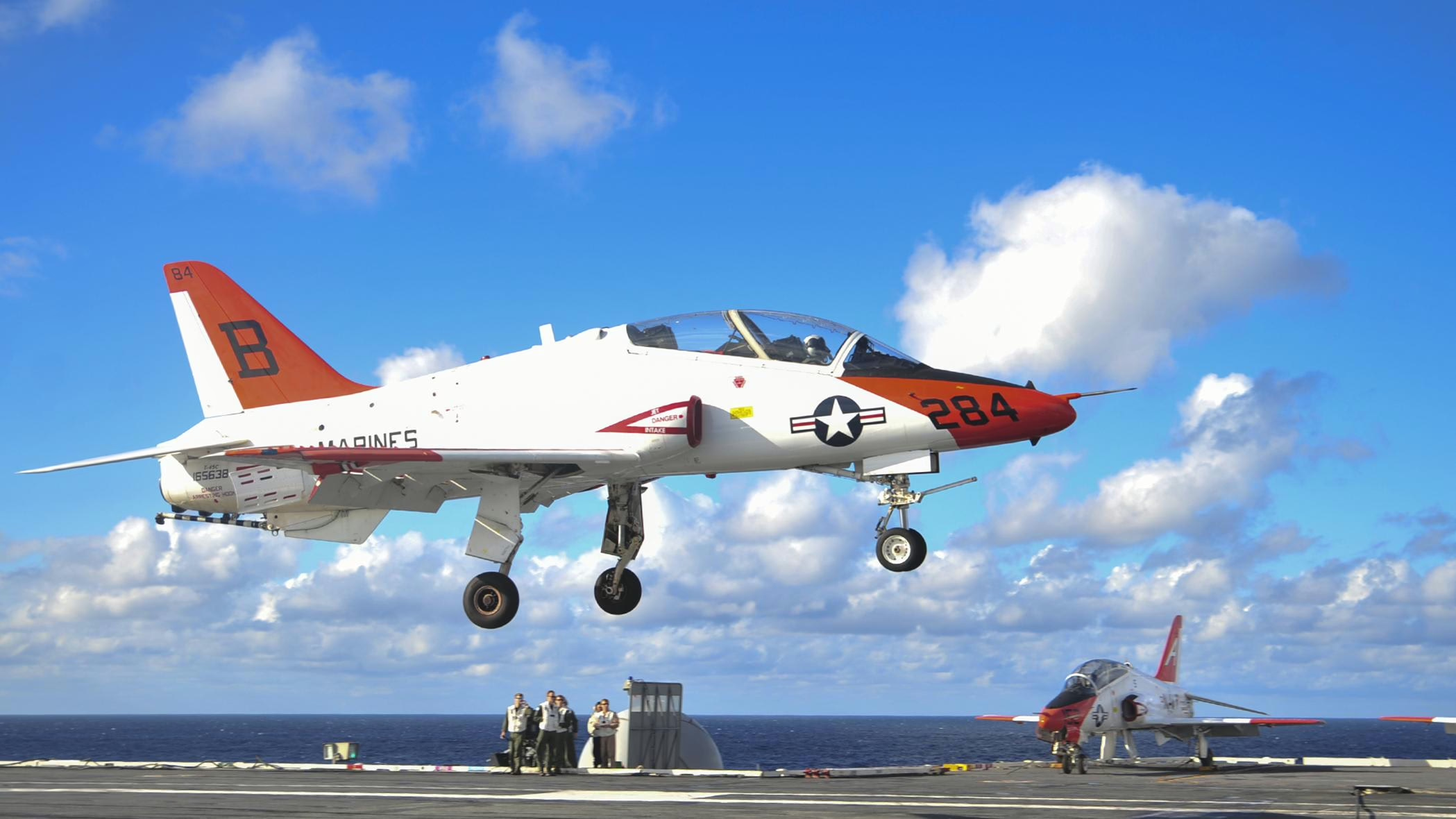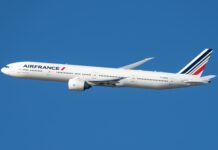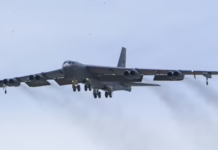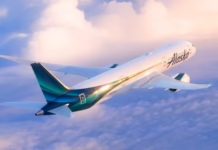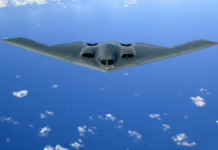Accelerated acquisition plan aims to replace aging T-45 Goshawks with modern aircraft that don’t need to perform carrier landings
The U.S. Navy has removed the requirement for its next-generation jet trainer to perform carrier landings, marking a significant shift in training philosophy as it moves forward with plans to replace its aging fleet of Boeing T-45 Goshawk aircraft.
In its latest request for information (RFI), issued March 31, the Navy revealed that the new Undergraduate Jet Training System (UJTS) aircraft will no longer be required to conduct actual or simulated carrier landings, citing advancements in operational platform landing modes and ground-based simulation technology.
“Due to advancements in operational platform landing modes and in ground-based simulation, the UJTS air vehicle will only be required to conduct field carrier landing practice to wave off,” the Navy stated in the RFI. This change eliminates the need for complex and costly modifications such as reinforced landing gear and tail hooks on candidate aircraft.
The Navy expects to move quickly through the procurement process, with a Request for Proposal (RFP) expected to be issued by December 2025 and a contract award just one month later in January 2027. Industry representatives interested in the project can participate in a virtual meeting scheduled for April 17, while companies must submit responses to the request for information no later than April 30 of this year. This accelerated timeline underscores the urgency with which the service needs to acquire its next-generation trainer aircraft.
Leading contenders for the lucrative contract include the Boeing T-7A Red Hawk, the Lockheed Martin/Korea Aerospace Industries TF-50N, and the Textron Aviation Defense/Leonardo M-346. The competition comes as the Navy seeks to maintain an aggressive contract-to-delivery schedule.
“In an effort to ensure speed to IOC [initial operational capability], the government desires to keep the contractor development timeline to no more than three years in duration” the Navy emphasized in its documentation.
Jim Mlynarski, Capture Manager for Lockheed’s Aeronautics business unit, emphasized his team’s readiness to deliver, noting that the TF-50N development leverages experience in producing aircraft for Poland and other customers.
“We have got a hot production line [in South Korea] and can move quickly,” Mlynarski said. He noted that no decision has been made on a U.S. final assembly site, but facilities in Fort Worth, Texas; Greenville, South Carolina; and Marietta, Georgia are potential candidates.
The current T-45 fleet provides intermediate and advanced training for Navy and Marine Corps aviators and flight officers. While previous estimates suggested the Navy may need as many as 149 replacement aircraft, the new RFI does not specify an exact quantity.
Additional details on the UJTS procurement may be revealed during the Navy League’s Sea-Air-Space event in Washington, DC, scheduled for April 7-9.
The contract will include engineering, manufacturing and development of the complete UJTS solution, as well as procurement of the first lot of low-rate initial production aircraft and limited quantities of ground-based training systems.

Key Takeaways
- Navy eliminates carrier landing requirement for T-45 Goshawk replacement.
- Accelerated procurement timeline targets January 2027 contract award.
- Top contenders include Boeing T-7A, Lockheed/KAI TF-50N, and Textron/Leonardo M-346.
- Three-year development timeline prioritized.


